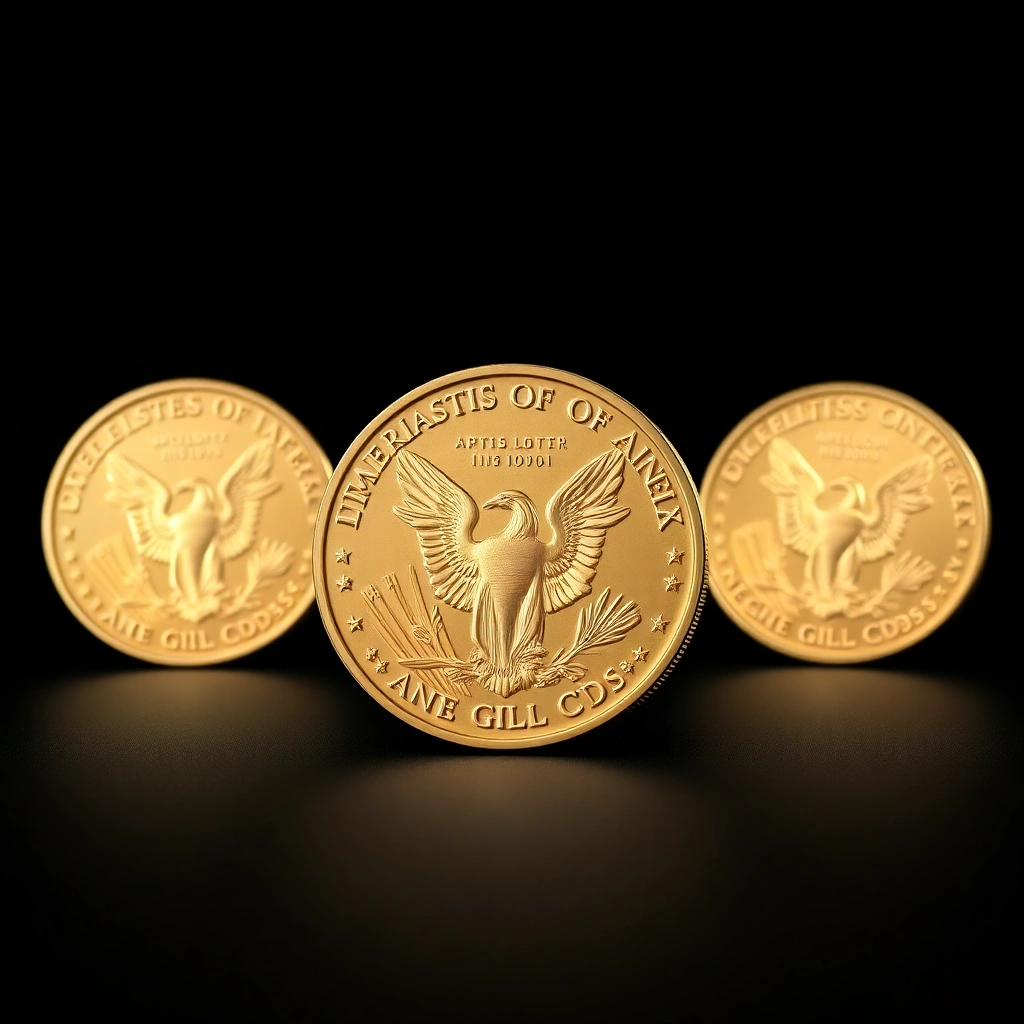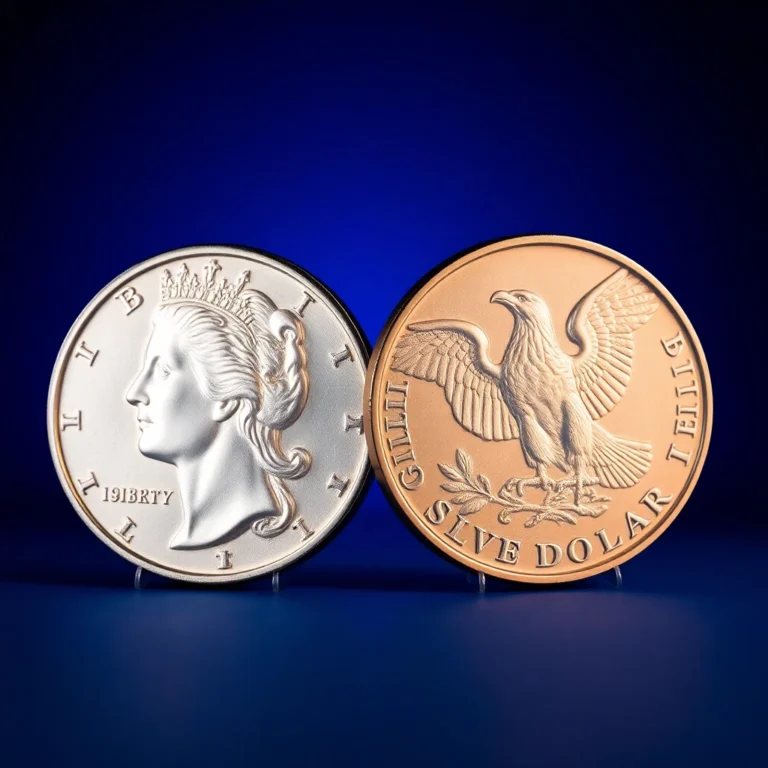Imagine holding a piece of American history in the palm of your hand—an exquisite blend of artistry and precious metal that has captivated collectors and investors alike. The American Gold Eagle, first minted in 1986, has soared in prestige and demand, becoming a cornerstone in the world of numismatics. As the market for these iconic coins heats up, enthusiasts and savvy investors are taking notice of their unmatched potential for both beauty and value.
For collectors, the American Gold Eagle represents not just a tangible asset but a symbol of national pride and craftsmanship. In this article, we will delve into why these coins have become a hot commodity, exploring their historical significance, design intricacies, and long-term investment potential. Whether you’re a seasoned collector or a newcomer to the gold market, understanding the allure of the American Gold Eagle can open doors to significant opportunities.
As the demand continues to rise, so does the intrigue surrounding their rarity and future worth. Discover why these gleaming treasures are not just coins, but timeless investments waiting to be unearthed.
The Rising Demand for American Gold Eagles and Their Long-Term Investment Potential
The American Gold Eagle has long been a staple of both numismatic collections and investment portfolios. With its rich history, stunning design, and intrinsic value, this iconic coin continues to capture the attention of collectors and investors alike. This article delves into the historical background, physical characteristics, mintage figures, known varieties, and provides a comprehensive guide to their market values and investment potential.
Historical Background and Significance 
The American Gold Eagle was first introduced in 1986, following the Gold Bullion Coin Act of 1985. This legislation was a response to the growing demand for a domestic gold bullion coin that could compete on the international market. The Gold Eagle quickly became the official gold bullion coin of the United States, recognized for both its purity and its legal tender status. Its release marked a significant milestone, as it was the first time since the Gold Reserve Act of 1934 that the U.S. Mint had produced a gold coin intended for public ownership.
Physical Characteristics and Design 
The American Gold Eagle is available in four denominations: 1/10 oz, 1/4 oz, 1/2 oz, and 1 oz, each containing 91.67% gold (22 karats) with copper and silver to enhance durability. The obverse design features Augustus Saint-Gaudens’ depiction of Lady Liberty, originally used on the $20 Double Eagle from 1907-1933. The reverse, designed by Miley Busiek, showcases a family of eagles, symbolizing strength and familial unity. In 2021, a new reverse design was introduced, featuring a close-up portrait of a bald eagle.
Mintage Figures and Rarity 
The mintage of American Gold Eagles varies annually, often influenced by economic factors and market demand. Certain years have notably lower mintages, making them more sought after by collectors. For example, the 1991 1 oz Gold Eagle is known for its low mintage of just 24,100 pieces, contributing to its desirability.
Known Varieties and Errors 
While the American Gold Eagle is primarily valued for its gold content, certain varieties and errors have captivated collectors. One notable variety is the “Reverse Proof” edition, which features a mirrored design contrast. Errors are rare but can include misstrikes or planchet defects, adding a unique aspect to any collection.
Value Information by Grade 
The value of American Gold Eagles depends on various factors, including their weight, condition, and market demand. Below is a detailed table showing the current value ranges by grade for the 1 oz American Gold Eagle:
| Grade | Value Range |
|---|---|
| Good (G-4) | $1,800-$1,850 |
| Very Good (VG-8) | $1,850-$1,900 |
| Fine (F-12) | $1,900-$1,950 |
| Very Fine (VF-20) | $1,950-$2,000 |
| Extremely Fine (EF-40) | $2,000-$2,050 |
| About Uncirculated (AU-50) | $2,050-$2,100 |
| Mint State (MS-60) | $2,100-$2,300 |
| Gem Mint State (MS-65) | $2,300-$2,500 |
Authentication Tips 
When investing in American Gold Eagles, ensuring authenticity is crucial. Here are some tips to help authenticate these coins:
- Examine the edge: Genuine coins have a reeded edge.
- Check the weight and dimensions: Verify that they match official specifications.
- Use a magnet: Real gold is non-magnetic.
- Consult a professional: When in doubt, seek verification from a reputable numismatist or grading service. FAQs
How is the value of an American Gold Eagle determined, and what role does grading play?
The value of an American Gold Eagle is primarily determined by its gold content, current market demand, and its condition, which is assessed through grading. Coins are graded on a scale from 1 to 70, with higher grades indicating fewer imperfections and potentially increasing the coin’s numismatic value. A well-graded coin not only holds intrinsic value due to its gold content but also appeals to collectors, sometimes commanding premiums above the spot price of gold.
What are some tips for authenticating American Gold Eagles?
To authenticate American Gold Eagles, start by examining the coin’s weight and size, which should match official specifications. Look for the coin’s hallmark details, such as sharpness in the design and the presence of a “W” mint mark for certain proofs. Using a magnet can also help, as genuine gold coins are not magnetic. Consider consulting with a reputable dealer or using third-party grading services for professional authentication.
What advice would you give to someone starting a collection of American Gold Eagles?
For new collectors, it’s wise to begin with a focus on either bullion coins, which track the price of gold closely, or proof coins, which are often more collectible due to their limited mintage and high-quality finish. Educate yourself on the different types and years of release, and consider starting with common dates to build your confidence. Always buy from reputable dealers, and keep abreast of market trends and mintage numbers to make informed decisions.
What is the historical significance of the American Gold Eagle?
The American Gold Eagle, first issued in 1986, holds historical significance as a continuation of the U.S. tradition of gold coinage, representing the country’s commitment to producing high-quality bullion coins. Its design, featuring Augustus Saint-Gaudens’ depiction of Lady Liberty and Miley Busiek’s family of eagles, pays homage to American heritage and artistry, making it not only a financial asset but also a piece of cultural history.
Are there any common varieties or errors that collectors should be aware of in American Gold Eagles?
While American Gold Eagles are known for their consistency, collectors should be aware of certain varieties, such as the different mint marks (e.g., “W” for West Point) and the presence of proof and bullion versions. Errors are rare but can include misstrikes or planchet flaws. These can potentially increase a coin’s value due to their uniqueness. Staying informed and consulting error specialist resources can enhance your ability to identify and appreciate these variations.






